
In-season, ripe grapefruit are almost as sweet as oranges. In fact, they are a cross between an orange and a pomelo. However, their bitterness can make them taste less sweet, which is why people often add sugar.
Jump to:
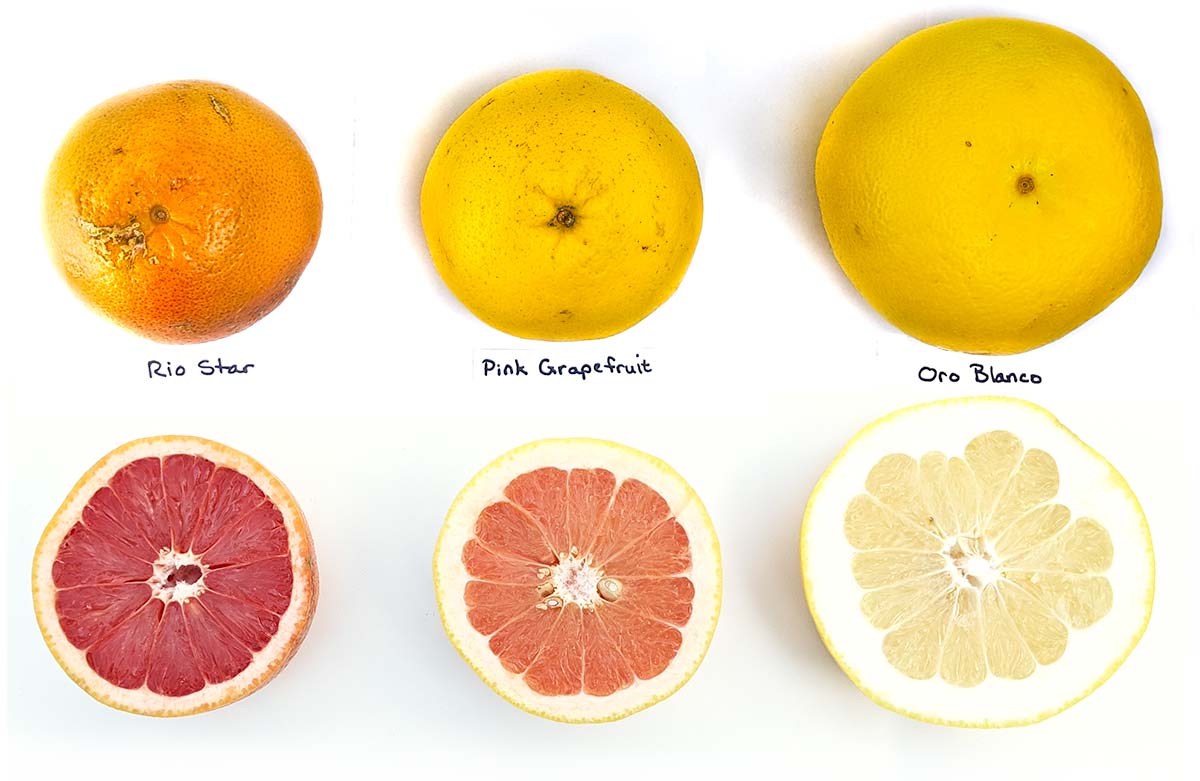
When are grapefruit in season?
Grapefruit are available from fall through spring, thanks to the different climates from big growers like Texas, Florida, and California. If you don't live in a state that grows grapefruit, you can still get high quality ones in your area. That's because they ship well, thanks to their thick, protective peel.
Texas and Florida are the two dominant grapefruit growers, with their season starting in November and lasting until May.
Southern California has recently become a big player in the grapefruit industry and their season covers the summer supply gap in the Florida and Texas market. California grapefruit are available from January through June.
| Jan | Feb | Mar | Apr | May | Jun | Jul | Aug | Sep | Oct | Nov | Dec | |
|---|---|---|---|---|---|---|---|---|---|---|---|---|
| Florida | x | x | x | x | x | x | x | |||||
| Texas | x | x | x | x | x | x | x | |||||
| California | x | x | x | x | X | X |
The longer the fruit is left to ripen on the tree, the larger and sweeter they get. So you are more likely to find sweeter ones later in the season. In fact, I often don't start buying them from any source until January.
See what's in season at the same time: January, February, March, April, May, June, November, and December.
Types of grapefruit
There are white, red, and pink varieties. A general rule of thumb is that the sweeter varieties have a deep red flesh.
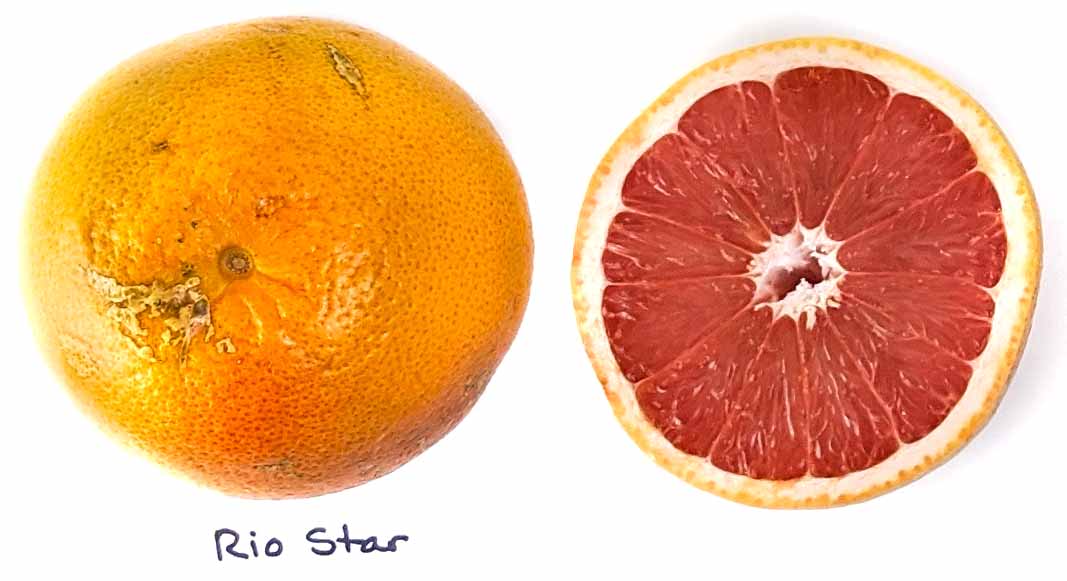
Red grapefruit
Grapefruit have become more marketable over the years thanks to breeding programs that increase the sugar content while also reducing the number of seeds. Ruby Red grapefruit is one of the most popular varietals grown today.
Ruby Red has since become an entire category of grapefruit grown in Texas as a result of breeding programs to get redder and sweeter flesh. These include several types of grapefruit that might be labeled as 'Ruby Red' or by their varietal names. Two of the main varieties are Rio Red and Star Ruby (sometimes labeled as, Rio Star).
If you can find red grapefruit labeled as Flame, give them a try. It's a mutation of Ruby Red that was discovered in a citrus grove in Texas. Flame grapefruit are one of the sweetest varieties.
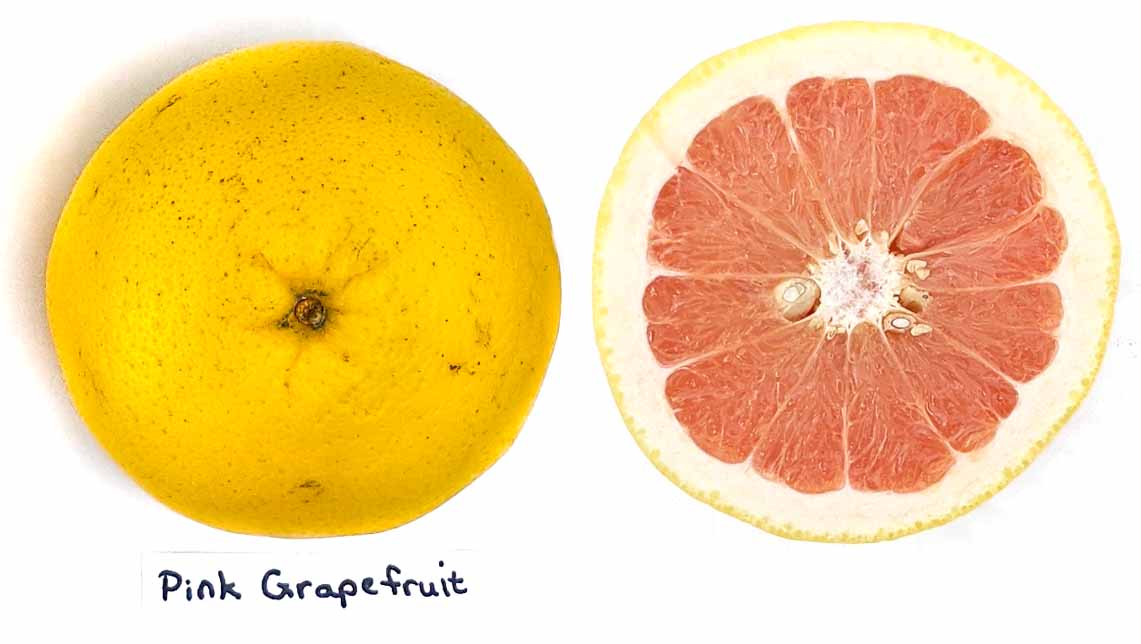
Pink grapefruit
Pink grapefruit have a more salmon-pink colored flesh than red varieties. They have a good balance of sweet and tart, with a more complex flavor than other types. They are also usually less bitter than red varieties.
White grapefruit
It's very rare to find white grapefruit sold in the stores. The predominant variety, Duncan, is choke full of seeds. However, the flavor is excellent and is great for juicing.
This variety is mostly sold to companies that make grapefruit juice and is rarely sold to consumers.
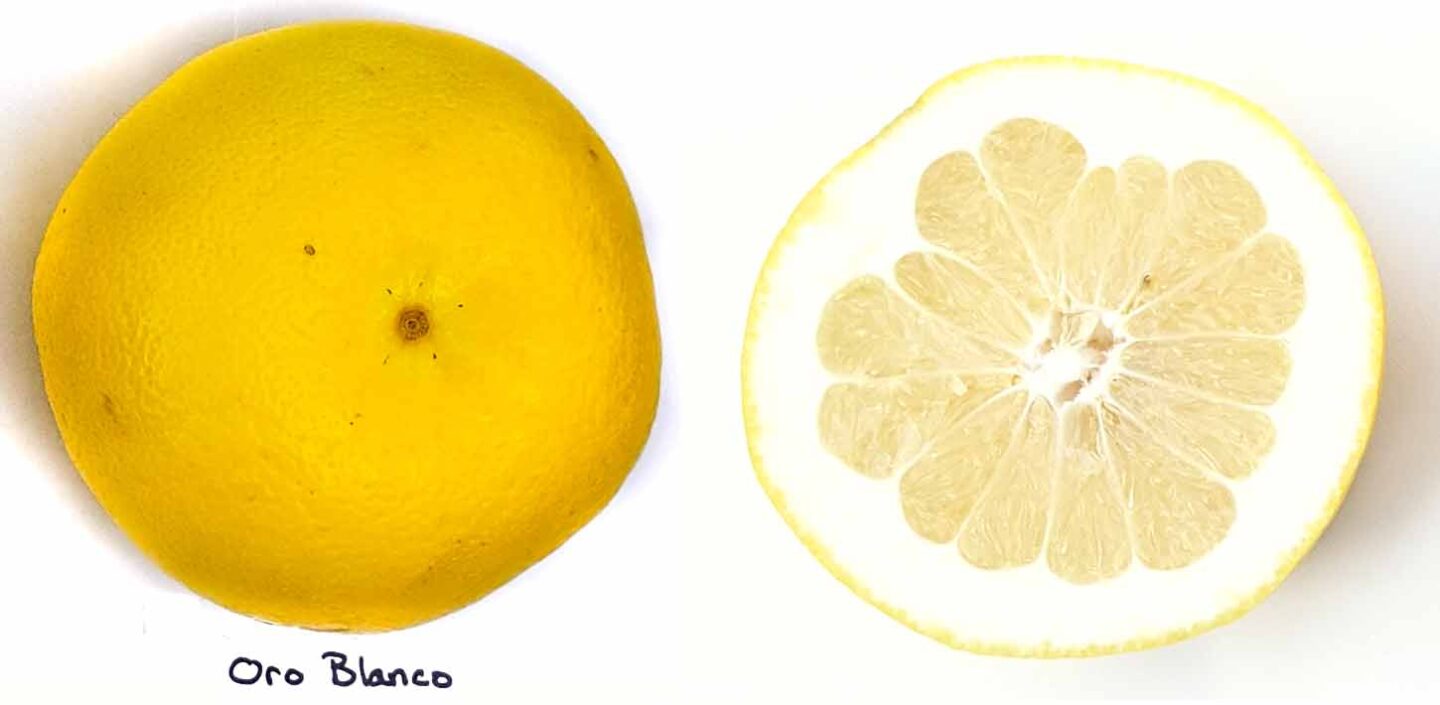
Grapefruit-pomelo hybrids
Oro Blanco and Melogold are a cross between pomelos and white grapefruit. These varieties both have pale yellow flesh and are seedless. They are known for having almost no bitterness, low acidity, and high sugar levels.
An agriculturalist at the University of California says Melogolds are better for mass-farming, but Oro Blancos have better flavor. I've had both, and I agree.
The season for these two varieties is shorter since they aren't grown as widely as red grapefruit. You can find them between December and March.
Sweetest grapefruit
Look for Flame or ruby red varieties (including Rio Red and Star Ruby).
Getting a super sweet grapefruit isn't just about picking the right variety, a few other things go into it as well:
- Fully tree-ripened: the longer they ripen on the tree, the sweeter they are and the larger they get. Look for bigger grapefruit within the same variety for a better chance at a fruit that ripened longer on the tree.
- Late season: late season grapefruit are often sweeter because they were left longer on the tree. Try buying grapefruit in March, April, and May.
- Less bitterness: bitterness inhibits our ability to taste sweetness, so varieties lower in bitterness make the fruit seem sweeter. Flame, ruby reds, and Oro Blanco all have lower bitterness.
If you run into bitter grapefruit, don't despair. You can add sugar, salt, or even fat to fix it.
How to pick
Grapefruits that are heavier for their size are juicier (because more water content makes them heavier). Larger grapefruit (compared to ones of the same variety) indicate they were left longer on the tree, so they will be sweeter.
Scarring on the fruit's outer peel is perfectly fine, but you don't want to see hard or soft spots on the peel (a sign of deterioration).
How to store
- Whole grapefruit: you can leave them on the counter for about a week, or they will last 3 weeks in the fridge.
- Cut grapefruit: If you've cut a grapefruit in half, wrap the exposed part with plastic wrap and store in the fruit drawer of your fridge.
- Cut segments: can be stored in an airtight container in the fridge.
- Zest: Tests from Cook's Illustrated show that frozen zest retains most of its flavor, unlike storing it in the fridge or on the counter. Freeze zest by spreading it out on a tray, then transferring to a freezer bag once frozen (this keeps the zest separated instead of one big clump).
Nutrition and benefits
A whole grapefruit is about 100 calories and 120% of your daily vitamin C. It also has 17g of sugar, which is about the same as an apple, and twice as much as an orange.
1 Pink/Red Grapefruit
Facts
- 1 medium grapefruit has...
- ⅔ cup of juice
- 2 Tbs zest
- 10-14 sections
- Grapefruit has 6% sugar by weight (for comparison, oranges are 10%, lemons are 1%)
- Red and white grapefruit have nearly identical nutrition, including the amount of sugar. The only substantial difference is that Red grapefruit have 25x more vitamin A than white ones.
- 1 grapefruit has more vitamin C than an orange - making it great for cold & flu season.
- It is high in antioxidants, including the peel (so get zesting).
Interaction with medications
Grapefruit juice can interact with certain medications, either causing too much or too little of the drug to get into your body. For more information, visit the FDA's article, "Grapefruit juice and some drugs don't mix."How to cut & zest
You can cut it in half (around the equator) and eat each segment with a spoon, or you can peel it and cut segments out (similar to an orange). The Pioneer Woman shares 3 ways to slice grapefruit, with plenty of pictures.
Remove wax before you zest: Grapefruits (and all citrus) are usually coated with a thin layer of wax to prevent moisture loss, which is currently approved by the FDA. Organic grapefruit are also coated in wax, but from an organic source like palm oil. To remove the wax, use a stiff bristle brush (like a vegetable brush), and clean it under hot running water.
Zest the outer, colored part of the peel, stopping when you get to the white part. The white part is the pith and is bitter.
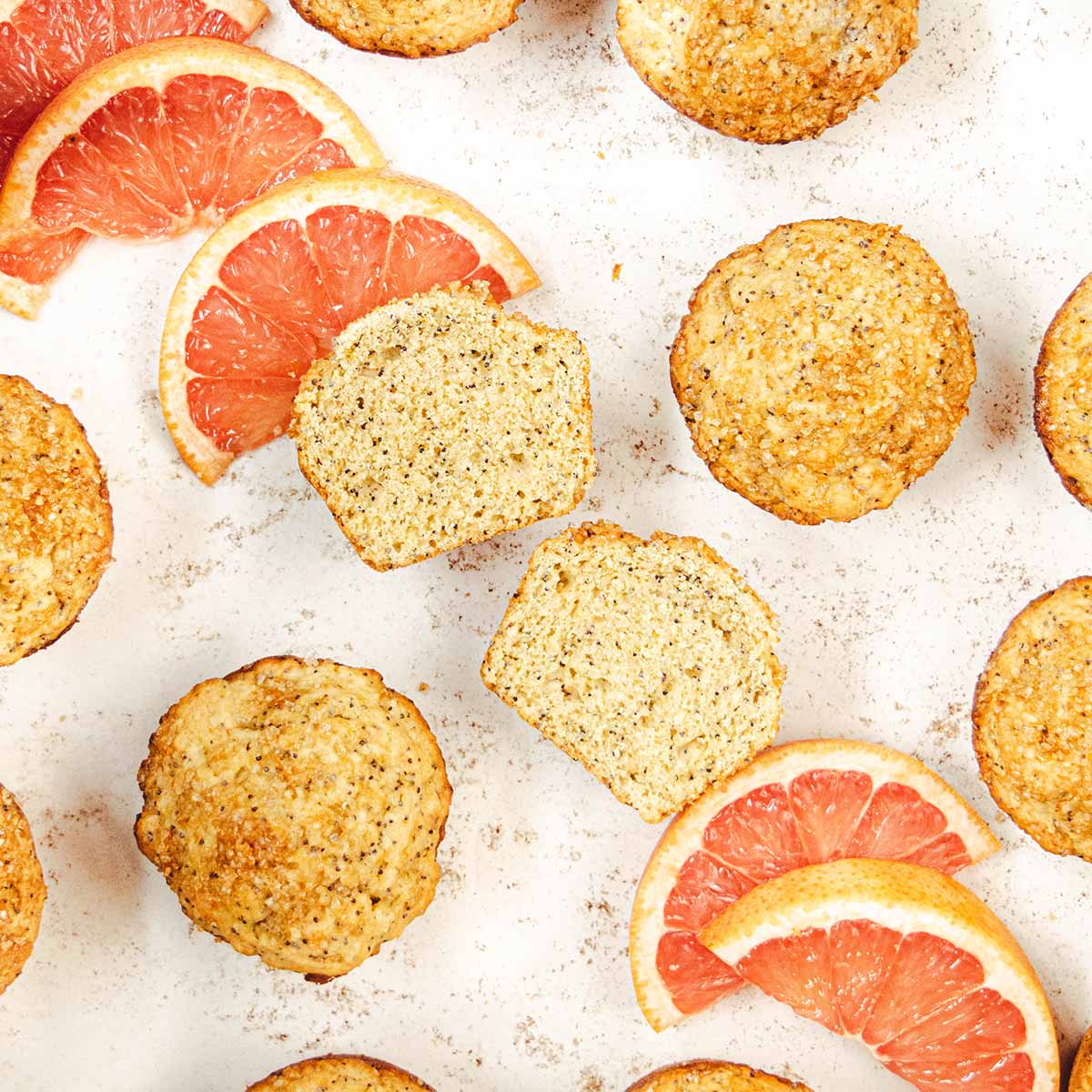
Recipes & flavor pairings
Grapefruit pairs well with strong flavored herbs like rosemary, basil and mint. Subtle notes of cardamom and almonds are quite complementary as well. And don't forget the classic citrus & fish pairing. Get over 50 recipes in the Grapefruit pairings feature.
Sources: Purdue, UC Riverside, Texas Monthly

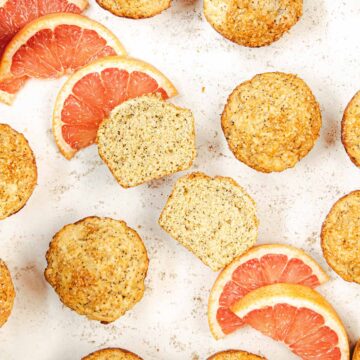


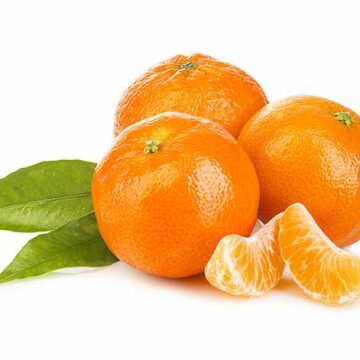
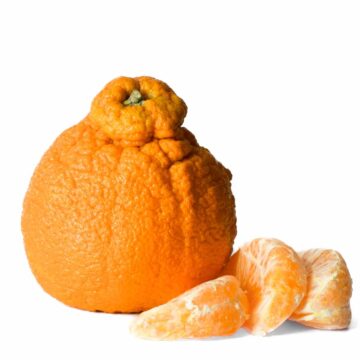
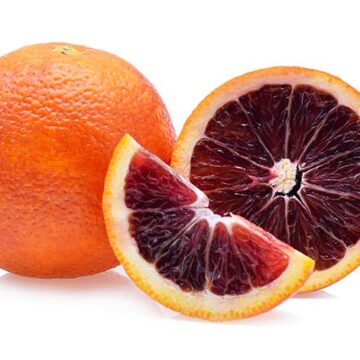
Dianne says
Hello ! Being a grapefruit lover, I love this post. Thank-you !
Question....For the last year or so, in both Market Basket & Shaw's markets (I live in coastal Mass.)the grapefruit is all tear-shaped rather than round, making it hard to halve & put in 2 bowls. Any idea why this is ? Just wondering.....
Brenda revelle says
I have grapefruit that have been kept for much longer than all the recommended periods. This applies to some refrigerated and some on my counter. They are all good and taste fine and show no signs of decomposition. Makes me rather question some of the data I’ve seen posted. Just saying …
Vee says
Thanks for posting - it sounds like you probably have ideal conditions for storage, allowing you to extend the shelf life. The storage life can be highly varied, depending on the variety of grapefruit, at what stage it was harvested, the temperature your house (for counter storage), among other things. For example, some refrigerators are good at circulating air and removing mold spores to slow down spoilage, as well as good humidity control in those drawers (grapefruit like high humidity during storage, around 90-95%).
Here are some resources:
Dale Cassell says
Lots of good info on grapefruit-enjoyed! However can you please tell me why the grapefruit I buy here in Maine for the last two months+ Has dozens of small seeds and always 2,3,&4 large seeds is it possible the supermarket has been ‘storing’ the grapefruit during the off season?
Thank you for a reply g
Dcassell
Vee says
Interesting question. My best guess is it has to do with the variety. Perhaps during the offseason (like in October), the variety in your stores is a kind that shows up every earlier or stores better, but it has more seeds. Do you remember if it was labeled with a variety at all? (Often they aren't, which is too bad, because you can't identify ones you want to buy (or not) again).
jannat says
great post! I love grapefruits, Thanks for sharing
Lydia says
We live in the SF Bay Area, and our neighbor had what we thought was an enormous grapefruit tree--maybe 25 feet tall. The fruit had a yellow skin, but the segments were very pale, almost white, and almost crunchy, with large vesicles, so the sections separated easily from the pith. Very nice texture for eating, more like peeling and eating a giant navel orange. I don't think you could eat it with a grapefruit spoon--too dry. The flavor was lovely: a little bitter, but not overtly sour (although not very sweet either, and definitely not rich). Alas, the neighbor cut down the tree and nobody in the current generation of the family liked grapefruit (!) so they had no clue what it was. I don't recall the peel being as thick as a pomelo, and I thought it might be an Oro Blanco. But I tried an Oro Blanco from the farmers market and the flesh was very different--darker and much juicier, sweeter, fine-grained vesicles, with a disappointing lack of acid. Clearly a totally different fruit. Any ideas? (We are hoping to plant a new one of whatever it was, preferably a dwarf or semi-dwarf version.)
Vee says
Oh I love a good mystery! I started looking through one of my go-to resources to try and find it for you, but realized it might be best to share a couple links and have you sort through them as well. The University of California, Riverside, has a huge collection of varieties with pictures and descriptions. Here's the grapefruit & hybrids page. Start with the white grapefruit category and then move on the hybrids.
Looking through it, I'm wondering if it's the New Zealand Grapefruit, as the description says it has a courser texture with a good acidity and bitterness.
I was also wondering if it could be a Trifoliate (Japanese Bitter Orange), or one of the hybrids like Yellow Tip Citrumelo.
If you do end up planting something, I'd love for you to drop me another comment after you get your first fruit (you know, in a few years). I also live in the Bay Area and have several fruit trees, but haven't tried planting a grapefruit tree yet.
Gary Lee says
Grapefruit question: Our food store just started getting SK (Sunkist) Star Ruby Grapefruit from Hansen's IGA Corporation. This grapefruit is light pink, poor taste, little flavor, not sweet, pale colored juice. Very little juice to squeeze out - less than an ounce. Then your mouth becomes DRY.
I've liked grapefruit since I was a kid (I'm 77). This store USED to sell nice quality, red grapefruit with excellent flavor, great taste, sweet, red juice. More than an oz of juice after I squeezed that half onto a saucer! Hansen's IGA is taking over the food market in northern Wisconsin and replacing GOOD foods with their "Best Choice" brand. No more USDA eggs, etc. Poor quality foods across the board.
What do you think of their grapefruit?
Any ideas?
Vee says
I get so disappointed when fruit is missing their characteristic, old-time flavor. I've been on a mission to find good strawberries as I haven't been impressed since I was a kid with a giant strawberry patch (in Wisconsin!). I finally found a grower who's breeding them for flavor and I got some plants, which should produce fruit this year.
But about grapefruit - I take it you've tried the grapefruit during their peak season, and it still is bland? Peak season is around January through March. I wonder if this is related to the diseases that have been taking out huge amounts of grapefruit trees over the past couple of years. Perhaps some of their efforts to combat it are hurting the flavor - but that's just a guess.
I will contact Sunkist to see if I can get more information, so stay tuned.
Otherwise, try to broil the grapefruit, which caramelizes the sugars a little and releases some juices.
I will also see if I can find any CSAs in Wisconsin that might import grapefruit from other sources. CSAs (if you aren't familiar with that term) are usually local farm-grown products from smaller farms. Some of them import from other states to be able to offer more of a variety, like Grapefruit, which is only grown in a handful of warmer states. Here's a website to search for CSA's near you (but none of them grow grapefruit locally). https://www.localharvest.org/